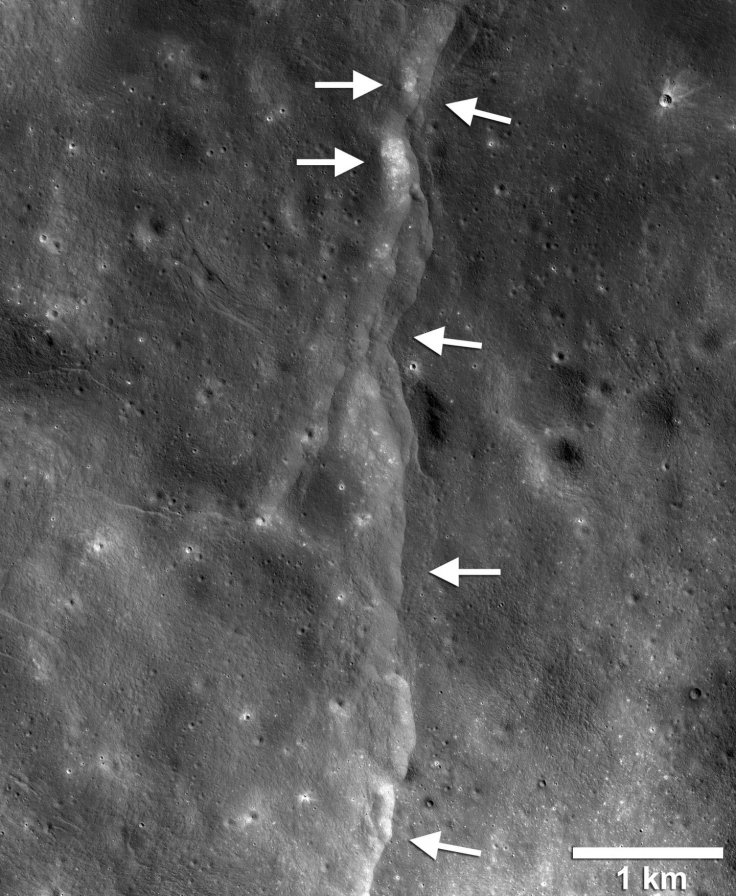
A new study suggests that the moon may still be shrinking today and actively producing moonquakes along these thrust faults. Earlier, data provided by NASA's Apollo and Lunar Reconnaissance Orbiter (LRO) missions indicated that moon shriveled like a raisin as its interior cooled, leaving behind thousands of cliffs or thrust faults on the moon's surface.
A team of researchers designed a new algorithm to re-analyze seismic data from instruments placed by NASA's Apollo missions in the 1960s and '70s. The analysis provided more accurate epicenter location data for 28 moonquakes recorded from 1969 to 1977.
The researchers found that at least eight of the quakes likely resulted from true tectonic activity--the movement of crustal plates--along the thrust faults, rather than from asteroid impacts or rumblings deep within the moon's interior. The LRO has captured more than 3,500 faults on the moon since it began operating in 2009- which faults resemble small stair-shaped cliffs called scarps.
Some LRO images show fresh boulder tracks, suggesting that quakes sent these boulders rolling down their cliff slopes.
Although the Apollo instruments recorded their last quake shortly before the instruments were shut down in 1977, the researchers propose that the moon is probably still experiencing quakes to this day. They also found that six of the eight quakes occurred when the moon was at or near its apogee, the point in the moon's orbit when it is farthest from Earth.
Thomas Watters, senior scientist in the Center for Earth and Planetary Studies at the Smithsonian Institution said ,"We think it's very likely that these eight quakes were produced by faults slipping as stress built up when the lunar crust was compressed by global contraction and tidal forces, indicating that the Apollo seismometers recorded the shrinking moon and the moon is still tectonically active."
Just like a grape shrinks to form a raisin, the moon also wrinkles when its interior cools. But unlike the raisin, the moon has a brittle crust, which causes breakage, which further results in thrust faults, where one section of crust is pushed up over an adjacent section.
This study was published in Natural Geoscience.
The NASA Lunar Reconnaissance Orbiter (LRO) team at Goddard Space Flight Center in 2012 released videos on how moon evolved over the period.
One video takes viewers through the moon's evolutionary history, and reveals how it came to appear the way it does today, while the other gives viewers a guided tour of prominent locations on the moon's surface. See them here:








